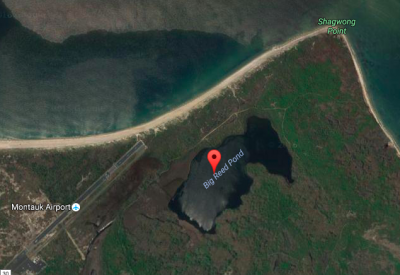Blue-Green Algae in Montauk's Big Reed Pond

The Suffolk County Health Department announced on Friday that a cyanobacteria, or blue-green algae, bloom has been confirmed at Big Reed Pond in Montauk. Exposure to cyanobacteria at high levels can cause nausea, vomiting, diarrhea, skin, eye or throat irritation, allergic reactions, or breathing difficulties.
Health officials have asked residents not to swim or wade in waters affected by blooms and to keep pets and children away from the area.
The news comes barely two weeks after the East Hampton Town Trustees reopened Georgica Pond in East Hampton, after it had been closed to the harvesting of crabs and other marine life for much of the summer due to a cyanobacteria bloom that formed in June. Big Reed Pond is not under jurisdiction of the trustees, who manage many of the town's waterways, bottomlands, and beaches on behalf of the public.
Hook Pond in East Hampton also experienced a cyanobacteria bloom last month.
Though naturally present in lakes and streams in low numbers, blue-green algae can become abundant, forming blooms that are typically in shades of green but also blue-green, yellow, brown, or red. They may produce floating scums on the surface of the water or may cause the water to take on a paint-like appearance.
